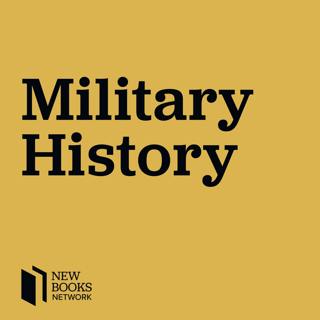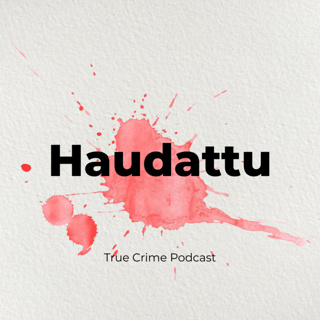
Jennifer T. Roberts, “The Plague of War: Athens, Sparta, and the Struggle for Ancient Greece” (Oxford UP, 2017)
The Peloponnesian War was one of the first subjects of historical inquiry, and one that has been the subject of many works ever since Thucydides wrote his famous account of the conflict. Yet these works typically focus just on the decades when Sparta’s Peloponnesian League fought against the Athenian empire. In The Plague of War: Athens, Sparta, and the Struggle for Ancient Greece (Oxford University Press, 2017), Jennifer T. Roberts sets the war within the broader context of inter-state hostilities in 5th and 4th century Greece. As she explains, fighting between the two sides did not begin in 431, nor did it really end in 404. Instead the Peloponnesian War was just one of a series of conflicts that stretched throughout the Hellenic era, in which victories often simply set the stage for the next round of battles. Though Sparta may have defeated Athens in 404, by continuing the story beyond then Roberts shows how the new alignments that resulted transformed the city states in ways that led to Sparta’s own defeat in 371, making her triumph in the war only a fleeting one. Learn more about your ad choices. Visit megaphone.fm/adchoices Support our show by becoming a premium member! https://newbooksnetwork.supportingcast.fm/military-history
16 Heinä 201756min

Patrick N. Hunt, “Hannibal” (Simon and Schuster, 2017)
In 218 BCE, the Carthaginian general Hannibal Barca launched an invasion of Italy designed to bring the Roman Republic to its knees. Yet for all of his success in defeating Rome’s legions on the battlefield, Hannibal ultimately failed in his lifelong goal. In Hannibal (Simon and Schuster, 2017), Patrick N. Hunt recounts the triumphs and frustrations of the legendary commanders dramatic military career. The son of a Carthaginian leader who fought Rome in the First Punic War, Hannibal was raised to reverse Carthage’s loss in that initial conflict. This he did by taking the fight to Rome, where his outnumbered armies triumphed over the Romans in three successive battles. Yet, as Hunt explains, Rome soon learned from Hannibal’s example, and the Carthaginians’ inability to translate battlefield victories into a Roman surrender left him mired in a war of attrition he could not win. By the time he faced a Roman army at Zama in 202 BCE, the situation was now reversed, as Scipio Africanus used many of Hannibal’s own tactics against him. In this Hunt exposes the irony of Hannibal’s life, as his effort to destroy Rome’s nascent empire only made it stronger, setting the stage for the next seven centuries of its domination of the Mediterranean. Learn more about your ad choices. Visit megaphone.fm/adchoices Support our show by becoming a premium member! https://newbooksnetwork.supportingcast.fm/military-history
13 Heinä 20171h 41min

Robert M. Browning Jr., “Lincoln’s Trident: The West Gulf Blockading Squadron during the Civil War” (U. of Alabama Press, 2015)
Though the U.S. Navy’s blockade of the Confederacy has not received the attention devoted to the bloody campaigns on land, it was an important contributor to the Union’s victory in the Civil War. In Lincoln’s Trident: The West Gulf Blockading Squadron during the Civil War (University of Alabama Press, 2015), Robert M. Browning Jr. describes the operations of the blockade in the Gulf Coast region. At the start of the war the newly-formed West Gulf squadron was faced with the task of patrolling hundreds of miles of coastline, from the Florida port of Pensacola to the Rio Grande River. Initially composed of just a handful of ships, the squadron would often spend months stationed off the coast, attempting to interdict the blockade runners that aided the Confederate war effort by bringing in the supplies the Confederates could not produce themselves. As the war went on the squadron took on the formidable task of capturing the major Confederate ports, and under the command of David Farragut it was instrumental to the capture of New Orleans and Mobile, as well as the occupation of the lower Mississippi River. It was through such efforts that the navy helped the Union win the war, and sooner than might otherwise have been possible. Learn more about your ad choices. Visit megaphone.fm/adchoices Support our show by becoming a premium member! https://newbooksnetwork.supportingcast.fm/military-history
10 Heinä 201754min

Should the U.S. Have Entered World War One?
In the inaugural podcast of Arguing History, historians Michael S. Neiberg and Brian Neumann address the question of Americas decision in 1917 to declare war against Germany. Together they discuss the factors involved in it, such as Germanys wartime provocations and the economic impact the war was having upon the nation. Yet it was more than just a product of the events of the conflict, as it came at a time when the role of the United States in the world was being redefined by its emergence as a major economic and financial power on the international scene. How Americans perceived this also played a role both in the decision to go to war, even though there was no consensus as to how the nation should respond to the consequences of their choice once they made it. Michael S. Neiberg is the Stimson Chair of the Department of National Security and Strategy at the U.S. Army War College and the author of Dance of the Furies: Europe and the Outbreak of World War I (Harvard University Press, 2014). Brian Neumann is an historian with the U.S. Army Center for Military History and the lead editor of the centers series of pamphlets on the war Learn more about your ad choices. Visit megaphone.fm/adchoices Support our show by becoming a premium member! https://newbooksnetwork.supportingcast.fm/military-history
24 Kesä 20171h 5min

Gary Kulik, “War Stories: False Atrocity Tales, Swift Boaters, and Winter Soldiers” (Potomac Books, 2009)
One often hears stories of World War II and Korean War veterans who came back from the war and refused to talk about what they had experienced in combat. They neither wanted folks at home to know what had happened nor did they want to relive it themselves. It was just too horrible to relate. The truth about combat in those conflicts, so we are told, was therefore suppressed. In Vietnam, the truth was also suppressed, but in a different way and for altogether different reasons. As Gary Kulik demonstrates in his remarkable book ‘War Stories’: False Atrocity Tales, Swift Boaters, and Winter Soldiers–What Really Happened in Vietnam (Potomac Books, 2009), some Vietnam veterans came back from the war and, far from hesitating to tell their “war stories,” exaggerated and even invented them. This was particularly true of atrocity tales, which were both numerous and well broadcast. As Kulik explains, the point of these false atrocity stories was not to portray the “grunts” in a bad light. On the contrary, the tellers of the tales portrayed themselves–with the aid of the anti-war media and what might be called the anti-war psychological establishment–as victims. Victims of what? The ‘American War Machine’ (my phrase, not Kulik’s)– a monstrous, immoral creation that ground vast quantities of men and material–American and Vietnamese–into dust for no good purpose. The ‘American War Machine,’ so Americans were told in the Winter Soldiers’ testimony, in a huge memoir literature, and in blockbuster films, produced atrocities that then in turn produced the broken, lost, and possibly insane Vietnam vet of popular folk memory. Think John Rambo or Travis Bickle. Kulik’s point is not that American soldiers committed no atrocities in Vietnam. They did, and they were too many of them. Nor is it to claim that American soldiers were not, in some cases, badly traumatized by their Vietnam experience. Some were, and too many of them. His argument is that the truth about Vietnam–that it was basically a war like others Americans have fought in the twentieth century, not one that produced a flood of atrocities and psychologically wounded soldiers–has been suppressed by those who wanted to tell politically-charged “war stories.” Learn more about your ad choices. Visit megaphone.fm/adchoices Support our show by becoming a premium member! https://newbooksnetwork.supportingcast.fm/military-history
15 Kesä 20171h 10min

Andrew Boyd, “The Royal Navy in Eastern Waters: The Linchpin of Victory, 1935-1942” (Seaforth Publishing, 2017)
In the 1930s the Royal Navy faced the problem of defending its empire in eastern Asia and Australia against the formidable naval power of Japan. How they responded to this threat in the final years of peace and the first years of the Second World War, is the subject of Andrew Boyd‘s book The Royal Navy in Eastern Waters: The Linchpin of Victory, 1935-1942 (Seaforth Publishing, 2017; distributed in the US by Naval Institute Press). As Boyd explains, the challenge was one of defending British interests against a modern fleet that was qualitatively the equal of theirs. Efforts to implement a strategy, though, were disrupted by the growing threat of war in Europe, and the fall of France in the summer of 1940 forced the British to reassess their strategic assumptions. The growing priority the British gave to their interests in the Mediterranean and the Middle East during this time came at the expense of their preparations against Japan, leading the British to seek greater cooperation with the United States and others to protect their possessions in the region. Though these attempts to establish an effective defense were incomplete when the Japanese onslaught came at the end of 1941, Boyd shows how the planning and preparation for it laid the groundwork for the successful defense of the Indian Ocean region, which ultimately proved strategically vital to Allied efforts to defeat the Axis powers. Learn more about your ad choices. Visit megaphone.fm/adchoices Support our show by becoming a premium member! https://newbooksnetwork.supportingcast.fm/military-history
14 Kesä 20171h 27min

John P. Langellier, “Fighting for Uncle Sam: Buffalo Soldiers in the Frontier Army” (Schiffer, 2016)
From the American Revolution to the present day, African Americans have stepped forward in their nation’s defense. Fighting for Uncle Sam: Buffalo Solders in the Frontier Army (Schiffer, 2016) breathes new vitality into a stirring subject, emphasizing the role men who have come to be known as “buffalo soldiers” played in opening the Trans-Mississippi West. This concise overview reveals a cast of characters as big as the land they served. Over 150 images painstakingly gathered nearly a half century from public and private collections enhance the written word as windows to the past. Now 150 years after Congress authorized blacks to serve in the Regular Army, the reader literally can peer into the eyes of formerly enslaved men who bravely bought their freedom on the bloody battlefields of the Civil War, then trekked westward, carried the “Stars and Stripes” to the Caribbean, and pursued Pancho Villa into Mexico with John “Black Jack” Pershing. Growing up in Tucson, Arizona, historian and author John P. Langellier spent four decades working in public history after earning a B.A. and M.A. in history from the University of San Diego and his Ph.D. in military history from Kansas State University. He spent a dozen years with the U.S. Army, helped found California’s Autry Museum of the American West, and served as director for Wyoming State Museum, deputy director of the Ronald Reagan Presidential Library, executive director of Arizona’s Sharlot Hall Museum, and director of Arizona Historical Society’s Central Division. He was also awarded an honorary membership into the 9th and 10th U.S. Horse Calvary Association. He has written dozens of published books, served as a Hollywood film consultant, a Smithsonian Institution fellow, and produced history documentaries for television networks A&E, History, and PBS. Langellier officially “retired” to Tucson in 2015, but still continues his work as one of the preeminent military historians in the United States. After Fighting for Uncle Sam: Blacks in the Frontier Army, one of his current research projects is a book-length work on the connections between the Western art of Frederic Remington and the U.S. Army 10th Calvary (Buffalo Soldiers) in Arizona. James Stancil is an independent scholar, freelance journalist, and the President and CEO of Intellect U Well, Inc. a Houston-area non-profit dedicated to increasing the joy of reading and media literacy in young people. Learn more about your ad choices. Visit megaphone.fm/adchoices Support our show by becoming a premium member! https://newbooksnetwork.supportingcast.fm/military-history
8 Kesä 201758min

Patrick J. Hayes, “The Civil War Diary of Rev. James Sheeran, Confederate Chaplain and Redemptorist” (Catholic Univ. of America Press, 2016)
During the Civil War Father James Sheeran served as a Catholic chaplain for the 14th Louisiana Infantry. Between his various responsibilities Sheeran kept a journal in which he recounted his experiences with, and observations of, life in the Army of Northern Virginia. As editor of The Civil War Diary of Rev. James Sheeran, Chaplain, Confederate, Redemptorist (Catholic University of America Press, 2016), Patrick J. Hayes has provided readers with the most complete edition yet of Sheeran’s manuscript, one that details the activities of a man of faith in a time of war. An immigrant from Ireland, Sheeran joined the Redemptorist congregation in the 1850s and was serving as a parish priest in New Orleans when the war began in 1861. As a military chaplain, Sheeran witnessed firsthand many of the key battles of the Civil War, from Second Manassas in 1862 to Cedar Creek in 1864, and his recorded observations provide a valuable record of those clashes. Yet Sheeran’s diaries also serve as a window into what life was like for soldiers and civilians during the conflict, as observed by a man whose commitment to the Confederate cause was matched only by his piety. Learn more about your ad choices. Visit megaphone.fm/adchoices Support our show by becoming a premium member! https://newbooksnetwork.supportingcast.fm/military-history
23 Touko 201758min





















